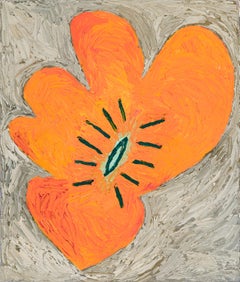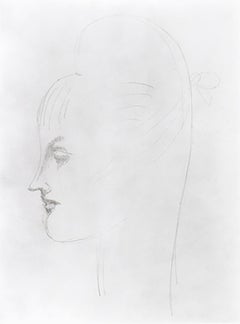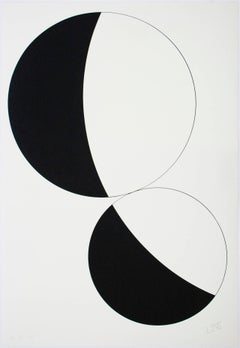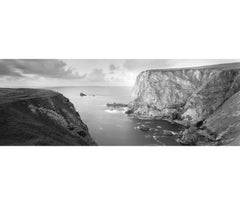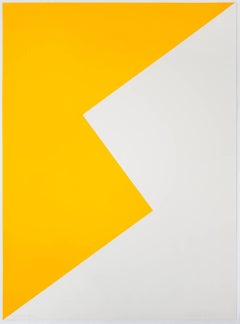Art Dealers Association of America
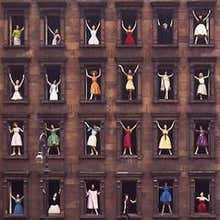
Art Dealers Association of America (ADAA)
Founded in 1962, the Art Dealers Association of America is a vetted community of more than 180 top-tier galleries across the United States. Working with these member galleries, ADAA appraisers offer assessment services for artworks spanning from the Renaissance to the present day. The ADAA also arranges public forums on important art-related topics and hosts The Art Show, presented each year at New York’s Park Avenue Armory, which stands out among art fairs for its acclaimed selection of curated booths — many of which are one-artist exhibitions.to
2
875
68
29
440
351
56
289
315
80
78
110
Overall Height
to
Overall Width
to
170
117
52
35
28
12
4
4
4
3
2
432
201
172
127
101
91
91
72
67
63
56
52
49
49
43
43
42
39
38
36
48
875
1,712
1
1
3
18
30
92
91
122
108
105
74
56
41
24
22
302
182
141
107
103
Period: 20th Century
Untitled
By Louis Elle (Ferdinand)
Located in New York, NY
Oil on canvas, 14 x 12 in.
Category
Late 20th Century American Modern Art Dealers Association of America
Materials
Canvas, Oil
Profile of a Woman
By Elie Nadelman
Located in New York, NY
Pencil on paper
Category
Early 20th Century American Modern Art Dealers Association of America
Materials
Pencil
Werkubersicht/Work-Overview G
By Leon Polk Smith
Located in New York, NY
Leon Polk Smith (1906 -1996) holds a unique place in a long tradition of American geometric abstract painting. Born near Chikasha, a Native American territory later annexed by the U....
Category
1980s Abstract Geometric Art Dealers Association of America
Materials
Screen
Study for Old Canal, Red and Blue (Rockaway, Morris Canal)
By Oscar Florianus Bluemner
Located in New York, NY
Oscar Bluemner was a German and an American, a trained architect who read voraciously in art theory, color theory, and philosophy, a writer of art criticism both in German and English, and, above all, a practicing artist. Bluemner was an intense man, who sought to express and share, through drawing and painting, universal emotional experience. Undergirded by theory, Bluemner chose color and line for his vehicles; but color especially became the focus of his passion. He was neither abstract artist nor realist, but employed the “expressional use of real phenomena” to pursue his ends. (Oscar Bluemner, from unpublished typescript on “Modern Art” for Camera Work, in Bluemner papers, Archives of American Art, Smithsonian Institution, as cited and quoted in Jeffrey R. Hayes, Oscar Bluemner [1991], p. 60. The Bluemner papers in the Archives [hereafter abbreviated as AAA] are the primary source for Bluemner scholars. Jeffrey Hayes read them thoroughly and translated key passages for his doctoral dissertation, Oscar Bluemner: Life, Art, and Theory [University of Maryland, 1982; UMI reprint, 1982], which remains the most comprehensive source on Bluemner. In 1991, Hayes published a monographic study of Bluemner digested from his dissertation and, in 2005, contributed a brief essay to the gallery show at Barbara Mathes, op. cit.. The most recent, accessible, and comprehensive view of Bluemner is the richly illustrated, Barbara Haskell, Oscar Bluemner: A Passion for Color, exhib. cat. [New York: Whitney Museum of American Art, 2005.])
Bluemner was born in the industrial city of Prenzlau, Prussia, the son and grandson of builders and artisans. He followed the family predilection and studied architecture, receiving a traditional and thorough German training. He was a prize-winning student and appeared to be on his way to a successful career when he decided, in 1892, to emigrate to America, drawn perhaps by the prospect of immediate architectural opportunities at the Chicago World’s Fair, but, more importantly, seeking a freedom of expression and an expansiveness that he believed he would find in the New World.
The course of Bluemner’s American career proved uneven. He did indeed work as an architect in Chicago, but left there distressed at the formulaic quality of what he was paid to do. Plagued by periods of unemployment, he lived variously in Chicago, New York, and Boston. At one especially low point, he pawned his coat and drafting tools and lived in a Bowery flophouse, selling calendars on the streets of New York and begging for stale bread. In Boston, he almost decided to return home to Germany, but was deterred partly because he could not afford the fare for passage. He changed plans and direction again, heading for Chicago, where he married Lina Schumm, a second-generation German-American from Wisconsin. Their first child, Paul Robert, was born in 1897. In 1899, Bluemner became an American citizen. They moved to New York City where, until 1912, Bluemner worked as an architect and draftsman to support his family, which also included a daughter, Ella Vera, born in 1903.
All the while, Oscar Bluemner was attracted to the freer possibilities of art. He spent weekends roaming Manhattan’s rural margins, visiting the Bronx, Brooklyn, Queens, and New Jersey, sketching landscapes in hundreds of small conté crayon drawings. Unlike so many city-based artists, Bluemner did not venture out in search of pristine countryside or unspoiled nature. As he wrote in 1932, in an unsuccessful application for a Guggenheim Fellowship, “I prefer the intimate landscape of our common surroundings, where town and country mingle. For we are in the habit to carry into them our feelings of pain and pleasure, our moods” (as quoted by Joyce E. Brodsky in “Oscar Bluemner in Black and White,” p. 4, in Bulletin 1977, I, no. 5, The William Benton Museum of Art, Storrs, Connecticut). By 1911, Bluemner had found a powerful muse in a series of old industrial towns, mostly in New Jersey, strung along the route of the Morris Canal.
While he educated himself at museums and art galleries, Bluemner entered numerous architectural competitions. In 1903, in partnership with Michael Garven, he designed a new courthouse for Bronx County. Garven, who had ties to Tammany Hall, attempted to exclude Bluemner from financial or artistic credit, but Bluemner promptly sued, and, finally, in 1911, after numerous appeals, won a $7,000 judgment.
Barbara Haskell’s recent catalogue reveals more details of Bluemner’s architectural career than have previously been known. Bluemner the architect was also married with a wife and two children. He took what work he could get and had little pride in what he produced, a galling situation for a passionate idealist, and the undoubted explanation for why he later destroyed the bulk of his records for these years. Beginning in 1907, Bluemner maintained a diary, his “Own Principles of Painting,” where he refined his ideas and incorporated insights from his extensive reading in philosophy and criticism both in English and German to create a theoretical basis for his art. Sometime between 1908 and 1910, Bluemner’s life as an artist was transformed by his encounter with the German-educated Alfred Stieglitz, proprietor of the Little Galleries of the Photo-Secession at 291 Fifth Avenue. The two men were kindred Teutonic souls. Bluemner met Stieglitz at about the time that Stieglitz was shifting his serious attention away from photography and toward contemporary art in a modernist idiom. Stieglitz encouraged and presided over Bluemner’s transition from architect to painter. During the same period elements of Bluemner’s study of art began to coalesce into a personal vision. A Van Gogh show in 1908 convinced Bluemner that color could be liberated from the constraints of naturalism. In 1911, Bluemner visited a Cézanne watercolor show at Stieglitz’s gallery and saw, in Cézanne’s formal experiments, a path for uniting Van Gogh’s expressionist use of color with a reality-based but non-objective language of form.
A definitive change of course in Bluemner’s professional life came in 1912. Ironically, it was the proceeds from his successful suit to gain credit for his architectural work that enabled Bluemner to commit to painting as a profession. Dividing the judgment money to provide for the adequate support of his wife and two children, he took what remained and financed a trip to Europe. Bluemner traveled across the Continent and England, seeing as much art as possible along the way, and always working at a feverish pace. He took some of his already-completed work with him on his European trip, and arranged his first-ever solo exhibitions in Berlin, Leipzig, and Elberfeld, Germany. After Bluemner returned from his study trip, he was a painter, and would henceforth return to drafting only as a last-ditch expedient to support his family when his art failed to generate sufficient income.
Bluemner became part of the circle of Stieglitz artists at “291,” a group which included Marsden Hartley, John Marin, and Arthur Dove. He returned to New York in time to show five paintings at the 1913 Armory Show and began, as well, to publish critical and theoretical essays in Stieglitz’s journal, Camera Work. In its pages he cogently defended the Armory Show against the onslaught of conservative attacks. In 1915, under Stieglitz’s auspices, Bluemner had his first American one-man show at “291.” Bluemner’s work offers an interesting contrast with that of another Stieglitz architect-turned-artist, John Marin, who also had New Jersey connections.
The years after 1914 were increasingly uncomfortable. Bluemner remained, all of his life, proud of his German cultural legacy, contributing regularly to German language journals and newspapers in this country. The anti-German sentiment, indeed mania, before and during World War I, made life difficult for the artist and his family. It is impossible to escape the political agenda in Charles Caffin’s critique of Bluemner’s 1915 show. Caffin found in Bluemner’s precise and earnest explorations of form, “drilled, regimented, coerced . . . formations . . . utterly alien to the American idea of democracy” (New York American, reprinted in Camera Work, no. 48 [Oct. 1916], as quoted in Hayes, 1991, p. 71).
In 1916, seeking a change of scene, more freedom to paint, and lower expenses, Bluemner moved his family to New Jersey, familiar terrain from his earlier sketching and painting. During the ten years they lived in New Jersey, the Bluemner family moved around the state, usually, but not always, one step ahead of the rent collector. In 1917, Stieglitz closed “291” and did not reestablish a Manhattan gallery until 1925. In the interim, Bluemner developed relationships with other dealers and with patrons. Throughout his career he drew support and encouragement from art cognoscenti who recognized his talent and the high quality of his work. Unfortunately, that did not pay the bills. Chronic shortfalls were aggravated by Bluemner’s inability to sustain supportive relationships. He was a difficult man, eternally bitter at the gap between the ideal and the real. Hard on himself and hard on those around him, he ultimately always found a reason to bite the hand that fed him.
Bluemner never achieved financial stability. He left New Jersey in 1926, after the death of his beloved wife, and settled in South Braintree, Massachusetts, outside of Boston, where he continued to paint until his own death in 1938. As late as 1934 and again in 1936, he worked for New Deal art programs designed to support struggling artists. Bluemner held popular taste and mass culture in contempt, and there was certainly no room in his quasi-religious approach to art for accommodation to any perceived commercial advantage. His German background was also problematic, not only for its political disadvantages, but because, in a world where art is understood in terms of national styles, Bluemner was sui generis, and, to this day, lacks a comfortable context.
In 1933, Bluemner adopted Florianus (definitively revising his birth names, Friedrich Julius Oskar) as his middle name and incorporated it into his signature, to present “a Latin version of his own surname that he believed reinforced his career-long effort to translate ordinary perceptions into the more timeless and universal languages of art” (Hayes 1982, p. 189 n. 1). In 1939, critic Paul Rosenfeld, a friend and member of the Stieglitz circle, responding to the difficulty in categorizing Bluemner, perceptively located him among “the ranks of the pre-Nazi German moderns” (Hayes 1991, p. 41). Bluemner was powerfully influenced in his career by the intellectual heritage of two towering figures of nineteenth-century German culture, Johann Wolfgang von Goethe and Georg Wilhelm Friedrich Hegel. A keen student of color theory, Bluemner gave pride of place to the formulations of Goethe, who equated specific colors with emotional properties. In a November 19, 1915, interview in the German-language newspaper, New Yorker Staats-Zeitung (Abendblatt), he stated:
I comprehend the visible world . . . abstract the primary-artistic . . . and after these elements of realty are extracted and analyzed, I reconstruct a new free creation that still resembles the original, but also . . . becomes an objectification of the abstract idea of beauty.
The first—and most conspicuous mark of this creation is . . . colors which accord with the character of things, the locality . . . [and which] like the colors of Cranach, van der Weyden, or Durer, are of absolute purity, breadth, and luminosity. . . . I proceed from the psychological use of color by the Old Masters . . . [in which] we immediately recognize colors as carriers of “sorrow and joy” in Goethe’s sense, or as signs of human relationship. . . . Upon this color symbolism rests the beauty as well as the expressiveness, of earlier sacred paintings. Above all, I recognize myself as a contributor to the new German theory of light and color, which expands Goethe’s law of color through modern scientific means (as quoted in Hayes 1991, p. 71).
Hayes has traced the global extent of Bluemner’s intellectual indebtedness to Hegel (1991, pp. 36–37). More specifically, Bluemner made visual, in his art, the Hegelian world view, in the thesis and antithesis of the straight line and the curve, the red and the green, the vertical and the horizontal, the agitation and the calm. Bluemner respected all of these elements equally, painting and drawing the tension and dynamic of the dialectic and seeking ultimate reconciliation in a final visual synthesis. Bluemner was a keen student of art, past and present, looking, dissecting, and digesting all that he saw. He found precedents for his non-naturalist use of brilliant-hued color not only in the work Van Gogh and Cezanne, but also in Gauguin, the Nabis, and the Symbolists, as well as among his contemporaries, the young Germans of Der Blaue Reiter.
Bluemner was accustomed to working to the absolute standard of precision required of the architectural draftsman, who adjusts a design many times until its reality incorporates both practical imperatives and aesthetic intentions. Hayes describes Bluemner’s working method, explaining how the artist produced multiple images playing on the same theme—in sketch form, in charcoal, and in watercolor, leading to the oil works that express the ultimate completion of his process (Hayes, 1982, pp. 156–61, including relevant footnotes). Because of Bluemner’s working method, driven not only by visual considerations but also by theoretical constructs, his watercolor and charcoal studies have a unique integrity. They are not, as is sometimes the case with other artists, rough preparatory sketches. They stand on their own, unfinished only in the sense of not finally achieving Bluemner’s carefully considered purpose.
The present charcoal drawing is one of a series of images that take as their starting point the Morris Canal as it passed through Rockaway, New Jersey. The Morris Canal industrial towns that Bluemner chose as the points of departure for his early artistic explorations in oil included Paterson with its silk mills (which recalled the mills in the artist’s childhood home in Elberfeld), the port city of Hoboken, Newark, and, more curiously, a series of iron ore mining and refining towns, in the north central part of the state that pre-dated the Canal, harkening back to the era of the Revolutionary War. The Rockaway theme was among the original group of oil paintings that Bluemner painted in six productive months from July through December 1911 and took with him to Europe in 1912. In his painting journal, Bluemner called this work Morris Canal at Rockaway N.J. (AAA, reel 339, frames 150 and 667, Hayes, 1982, pp. 116–17), and exhibited it at the Galerie Fritz Gurlitt in Berlin in 1912 as Rockaway N. J. Alter Kanal. After his return, Bluemner scraped down and reworked these canvases. The Rockaway picture survives today, revised between 1914 and 1922, as Old Canal, Red and Blue (Rockaway River) in the collection of the Hirshhorn Museum and Sculpture Garden, Smithsonian Institution, Washington D. C. (color illus. in Haskell, fig. 48, p. 65).
For Bluemner, the charcoal expression of his artistic vision was a critical step in composition. It represented his own adaptation of Arthur Wesley’s Dow’s (1857–1922) description of a Japanese...
Category
20th Century American Modern Art Dealers Association of America
Materials
Paper, Charcoal
Benwee Head, County Mayo, Ireland
By David H. Gibson
Located in Dallas, TX
"I like to go back to a place. Seasons change. Light, which is theater, changes. Nature is tumultuous, and our contact with it makes life happen.” - David H. Gibson
David H. Gibson ...
Category
Late 20th Century Contemporary Art Dealers Association of America
Materials
Silver Gelatin
Untitled (Tamarind K)
By Leon Polk Smith
Located in New York, NY
Leon Polk Smith (1906 -1996) holds a unique place in a long tradition of American geometric abstract painting. Born near Chikasha, a Native American territory later annexed by the U....
Category
1960s Hard-Edge Art Dealers Association of America
Materials
Lithograph
Corrected RC Site Plan, 1988/92
By James Turrell
Located in Houston, TX
James Turrell
Corrected RC Site Plan, 1988/92
Ink on printed paper
35 x 45
Category
20th Century Contemporary Art Dealers Association of America
Materials
Felt Pen, Black and White
Afternoon
By Donald S. Vogel
Located in Dallas, TX
Donald Vogel’s paintings reflect his interest in seeking beauty in life and in sharing pleasure with his viewers. Vogel entreats us to "rejoice and celebrate each new day, knowing it...
Category
1980s American Impressionist Art Dealers Association of America
Materials
Oil, Panel
Jean-Paul Belmondo and Jean Seberg on the bed in Rm. 12 at the Hotel Souffle
By Raymond Cauchetier
Located in Santa Monica, CA
Signed, titled and dated in pencil on verso
Category
Mid-20th Century Art Dealers Association of America
Materials
Silver Gelatin
Blue Invention
By Fonseca Caio
Located in San Francisco, CA
Edition of 50
Category
1990s Art Dealers Association of America
Materials
Etching, Aquatint
Elements
By Philip Guston
Located in San Francisco, CA
Philip Guston was born in 1913 in Montreal, Canada. He began painting at the age of 12, and in 1927 he enrolled in the Los Angeles Manual Arts High School , where both he and Jackson...
Category
1970s Modern Art Dealers Association of America
Materials
Lithograph
FLOATING GREEN APPLES OVER NAPKIN
By Volker Seding
Located in New York, NY
hand colored photograph of green apples. Still-Life.
framed in wood with gold leaf corners.
Category
1970s Post-War Art Dealers Association of America
Materials
Photographic Paper, Color Pencil
Untitled
By Gary Stephan
Located in Houston, TX
Gary Stephan
Untitled, 1990
Oil and acrylic paint on linen
18 x 14 inches
Category
20th Century Contemporary Art Dealers Association of America
Materials
Oil, Acrylic
Why Me
By Valton Tyler
Located in Dallas, TX
In The New York Times Arts in America column, Edward M. Gomez writes of Valton Tyler, "visionary seems the right word for describing his vivid, unusual and technically refined painti...
Category
1990s Abstract Art Dealers Association of America
Materials
Canvas, Oil
Nude with Green Hair
By Donald S. Vogel
Located in Dallas, TX
Donald Vogel’s paintings reflect his interest in seeking beauty in life and in sharing pleasure with his viewers. Vogel entreats us to "rejoice and celebrate each new day, knowing it...
Category
1970s American Modern Art Dealers Association of America
Materials
Canvas, Oil
New York Stock Exchange, New York City
By Neal Slavin
Located in New York, NY
15 x 24 inch digital chromogenic print
Edition 15 + 3AP
Signed, titled, dated and editioned on frame label provided
Neal Slavin, a native New Yorker, began photographing groups ...
Category
1980s Contemporary Art Dealers Association of America
Materials
Digital
STILL LIFE CERAMIC
By Tom Wesselmann
Located in New York, NY
ceramic relief sculpture, glazed in colors.
Bold colors.
Edition 186/200
In original wooden box (22 x 24 x 4 3/4")
Category
1980s 85 New Wave Art Dealers Association of America
Materials
Ceramic, Glaze
Untitled
By Terry Winters
Located in New York, NY
Terry Winters
Untitled
1987
Lithograph in eleven colors on blue-green handmade J. Greene & Son paper
Print: 32 1/4 x 23 1/2 inches; 82 x 60 cm
Frame: 40 1/2 x 31 1/2 inches; 103 x 80...
Category
1980s Contemporary Art Dealers Association of America
Materials
Lithograph, Handmade Paper
Afternoon Tea
By Donald S. Vogel
Located in Dallas, TX
Including the frame, the overall dimensions are 31 x 38 inches
Donald Vogel’s paintings reflect his interest in seeking beauty in life and in sharing pleasure with his viewers. Voge...
Category
1970s American Impressionist Art Dealers Association of America
Materials
Oil, Panel
Untitled
By Charles Houghton Howard
Located in New York, NY
Charles Houghton Howard was born in Montclair, New Jersey, the third of five children in a cultured and educated family with roots going back to the Massachusetts Bay colony. His fat...
Category
20th Century American Modern Art Dealers Association of America
Materials
Paper, Gouache, Graphite
New Planting
By Donald S. Vogel
Located in Dallas, TX
Donald Vogel’s paintings reflect his interest in seeking beauty in life and in sharing pleasure with his viewers. Vogel entreats us to "rejoice and celebrate each new day, knowing it...
Category
Late 20th Century American Impressionist Art Dealers Association of America
Materials
Oil, Panel
NIGHT COURIER
By Julio Larraz
Located in New York, NY
watercolor and pencil drawing of a small airplane. framed in a silver leaf frame.
landscape
Category
1980s Contemporary Art Dealers Association of America
Materials
Paper, Watercolor, Pencil
Bar Harbor
Located in New York, NY
Edition: 5 or less. One of possibly 3 variants
Category
20th Century American Modern Art Dealers Association of America
Materials
Monotype
Storage Shed
By Donald S. Vogel
Located in Dallas, TX
The greenhouse became a favorite subject of Donald Vogel's in the 1980's. As Vogel reflected in the 1998 catalogue published for his traveling retrospective exhibition, "The greenhou...
Category
Late 20th Century American Impressionist Art Dealers Association of America
Materials
Oil, Panel
Girl in Green
By Donald S. Vogel
Located in Dallas, TX
Donald Vogel’s paintings reflect his interest in seeking beauty in life and in sharing pleasure with his viewers. Vogel entreats us to "rejoice and celebrate each new day, knowing it...
Category
1940s American Modern Art Dealers Association of America
Materials
Linen, Oil
The Razorback Bunch (Etching VI)
By Robert Rauschenberg
Located in Houston, TX
Robert Raushenberg
The Razorback Bunch (Etching VI), 1982
Intaglio in 2 colors on handmade Twinrocker paper
29 1/2 x 21 3/4 inches
Edition of 24
Framed
Category
20th Century Contemporary Art Dealers Association of America
Materials
Intaglio
Lachan Strand, Castletown, County Mayo, Ireland
By David H. Gibson
Located in Dallas, TX
"I like to go back to a place. Seasons change. Light, which is theater, changes. Nature is tumultuous, and our contact with it makes life happen.” - David H. Gibson
David H. Gibson ...
Category
Late 20th Century Contemporary Art Dealers Association of America
Materials
Silver Gelatin
Open Door
By John Hartell
Located in Dallas, TX
Valley House Gallery is honored to present a selection of paintings from the estate of American artist, John Hartell (1902-1995). John Hartell taught two disciplines at Cornell University in Ithaca, New York: freshman architecture and graduate painting. He was a much-loved professor there from 1930 until his retirement in 1967; one of his most illustrious students is the architect Richard Meier. As an artist, Hartell's first solo exhibition was in 1937 at Kleeman Gallery in New York. He exhibited at Kraushaar Galleries in New York for four decades, beginning in 1943. The Hartell Gallery at Cornell University, under the Sibley Dome, is named for him. In describing John Hartell, the artist Michael Boyd...
Category
Late 20th Century American Modern Art Dealers Association of America
Materials
Canvas, Oil
Untitled
By Louisa Chase
Located in New York, NY
Louisa Lizbeth Chase was born in 1951 to Benjamin and Wilda Stengel Chase in Panama City, Panama, where her father, a West Point graduate, was stationed. The family moved to Pennsylv...
Category
20th Century Contemporary Art Dealers Association of America
Materials
Canvas, Wax, Oil
FORMS DANS UN ESPACE CIRCULAIRE I
By Edward Allington
Located in New York, NY
lithograph edition of 90.
signed in pencil, bottom right corner.
edition number in pencil, bottom left corner.
Edward Allington is best known for his work in the 1980's New British S...
Category
1980s 85 New Wave Art Dealers Association of America
Materials
Lithograph
Untitled, 417
By William Coupon
Located in Santa Monica, CA
Signed and numbered in pencil on recto.
Category
1980s Art Dealers Association of America
Materials
Archival Pigment
"Airport" Jacqueline and John F. Kennedy, Portland, Oregon
By Jacques Lowe
Located in Santa Monica, CA
What do you do when, as a photographer, you are told your image archive is so precious that it's uninsurable? The answer for Jacques Lowe, whose images helped create the legend of Jo...
Category
1950s Art Dealers Association of America
Materials
Silver Gelatin
Audrey Hepburn, The Ritz, Paris (Profile) No #6
By Angela Williams
Located in Santa Monica, CA
Edition 1 of 50
Signed & numbered in ink on recto
Category
1960s Art Dealers Association of America
Materials
Silver Gelatin
Falling Bear
By Gary Hume
Located in New York, NY
Gary Hume
Falling Bear
1995
Silkscreen
32 3/4 x 26 inches; 83 x 66 cm
Edition of 25
Signed, dated, and numbered in graphite (lower recto)
Frame available upon request
Available fro...
Category
1990s Contemporary Art Dealers Association of America
Materials
Screen
Prefatio, from the Graphic Tectonics Series
By Josef Albers
Located in New York, NY
Edition: 34. This impression is one of only two proofs printed on graph paper. Printed by Reinhard Schumann, Hickory, North Carolina. Reproduced in Formulation: Articulation (portfol...
Category
20th Century American Modern Art Dealers Association of America
Materials
Screen
Still Life with Tangerines
By Donald S. Vogel
Located in Dallas, TX
Donald S. Vogel's work has entered the collections of the following institutions:
Art Institute of Chicago, Chicago, Illinois
Beaumont Museum of Fine Art, Beaumont, Texas
Charle...
Category
1960s Post-War Art Dealers Association of America
Materials
Oil, Panel
Roses
By Olivia Parker
Located in Santa Monica, CA
This is a Vintage Silver Gelatin Print, signed, titled, dated, and numbered in ink on recto.
Category
1980s Art Dealers Association of America
Interior with Figures
By Arthur Osver
Located in Dallas, TX
Arthur Osver studied at Northwestern University and the Art Institute of Chicago. Osver was awarded the Prix de Rome in 1952. He taught at the Brooklyn Museum Art School, Columbia Un...
Category
1930s American Modern Art Dealers Association of America
Materials
Oil, Canvas
North Sea
By Mimmo Paladino
Located in Dallas, TX
from the Padoli Monotypes III
Category
1970s Modern Art Dealers Association of America
Materials
Monotype
THIS PIECE IS MINE
By Julio Larraz
Located in New York, NY
Sepia Aquatint. Edition 15/25
slice of watermelon on a table
Category
1980s Contemporary Art Dealers Association of America
Materials
Aquatint
Boats at the Dock
By Stephen Seymour Thomas
Located in Dallas, TX
gouache with pen and ink
signed "Seymour Thomas" at lower right
Category
20th Century Academic Art Dealers Association of America
Materials
Gouache, Pen, Ink
Untitled
By Louisa Chase
Located in New York, NY
Louisa Lizbeth Chase was born in 1951 to Benjamin and Wilda Stengel Chase in Panama City, Panama, where her father, a West Point graduate, was stationed. The family moved to Pennsylv...
Category
20th Century American Modern Art Dealers Association of America
Materials
Canvas, Oil
Werkubersicht/Work-Overview E
By Leon Polk Smith
Located in New York, NY
Leon Polk Smith (1906 -1996) holds a unique place in a long tradition of American geometric abstract painting. Born near Chikasha, a Native American territory later annexed by the U....
Category
1980s Abstract Geometric Art Dealers Association of America
Materials
Screen
Greenhouse Yellows
By Donald S. Vogel
Located in Dallas, TX
Donald Vogel’s paintings reflect his interest in seeking beauty in life and in sharing pleasure with his viewers. Vogel entreats us to "rejoice and celebrate each new day, knowing it...
Category
Late 20th Century American Impressionist Art Dealers Association of America
Materials
Oil, Panel
Canal
Located in Dallas, TX
Signed "Lifschitz 85" at lower right
The overall dimensions, including the frame, are 26 1/2 x 32 3/8 inches.
Category
1980s Contemporary Art Dealers Association of America
Materials
Pastel
Greenhouse Shadows
By Donald S. Vogel
Located in Dallas, TX
Donald Vogel’s paintings reflect his interest in seeking beauty in life and in sharing pleasure with his viewers. Vogel entreats us to "rejoice and celebrate each new day, knowing it...
Category
1990s American Impressionist Art Dealers Association of America
Materials
Oil, Panel
Untitled (Tamarind A)
By Leon Polk Smith
Located in New York, NY
Leon Polk Smith (1906 -1996) holds a unique place in a long tradition of American geometric abstract painting. Born near Chikasha, a Native American territory later annexed by the U....
Category
1960s Hard-Edge Art Dealers Association of America
Materials
Lithograph
EL PADRE DE LA PATRIA NUEVA
By Julio Larraz
Located in New York, NY
color monotpy of soldier on a horse with raised sword
Category
1990s Contemporary Art Dealers Association of America
Materials
Monotype
Woman on a Bed
By Lucian Freud
Located in New York, NY
Lucian Freud
Woman on a Bed
1991-92
Etching on Somerset Satin White paper
17 1/2 x 15 1/2 inches; 44 x 39 cm
Edition of 30
Initialed and numbered in graphite (lower recto)
Frame available upon request
Published by Matthew Marks Gallery...
Category
1990s Contemporary Art Dealers Association of America
Materials
Etching
SUNDAY VISIT
Located in New York, NY
acrylic painting on canvas of people dressed in their Sunday clothing
Category
1980s Other Art Style Art Dealers Association of America
Materials
Canvas, Acrylic
Bilboquet
By Gregory Amenoff
Located in New York, NY
Gregory Amenoff’s work has been the subject of numerous solo and group exhibitions throughout the country, including the Whitney Museum of American Art, New York; Cleveland Museum of...
Category
20th Century Abstract Art Dealers Association of America
Materials
Canvas, Oil
Many Colored Flowers
By Donald S. Vogel
Located in Dallas, TX
Donald S. Vogel has been a set designer and technical director in the theater, a fine art dealer, and a writer, but first and foremost he is a painter. From a young age he was intrig...
Category
20th Century American Impressionist Art Dealers Association of America
Materials
Oil, Panel
Untitled
By Francis Chapin
Located in Dallas, TX
Francis Chapin was one of the most celebrated painters in Chicago during his lifetime. When he was a young art student, Valley House founder, Donald Vogel, painted with "Chape" on th...
Category
1930s American Modern Art Dealers Association of America
Materials
Ink, Paper, Watercolor
Shaded Bench
By Donald S. Vogel
Located in Dallas, TX
Donald Vogel’s paintings reflect his interest in seeking beauty in life and in sharing pleasure with his viewers. Vogel entreats us to "rejoice and celebrate each new day, knowing it...
Category
Late 20th Century American Impressionist Art Dealers Association of America
Materials
Panel, Oil
Nava Creek Bottom, Nacogdoches, Texas
By David H. Gibson
Located in Dallas, TX
"I like to go back to a place. Seasons change. Light, which is theater, changes. Nature is tumultuous, and our contact with it makes life happen.” - David H. Gibson
David H. Gibson is a lifelong photographer whose first contact with the medium was in his father's darkroom before he could read. Gibson received a B.A. from Centenary College in Shreveport, Louisiana, and an M.A. at Trinity University in San Antonio, Texas. His early work in theater lighting...
Category
1990s Romantic Art Dealers Association of America
Materials
Silver Gelatin
Robert Oppenheimer
By Yousuf Karsh
Located in Santa Monica, CA
Karsh is a master 20th Century photographer. Karsh is known for his portraits of authors, scientists, artists, statesmen, musicians, and other dis...
Category
1950s Art Dealers Association of America
Materials
Silver Gelatin
The Brooklyn Bridge
By Rudolph Ruzicka
Located in New York, NY
Born in Bohemia in what is now the Czech Republic, Rudolph Ruzicka emigrated to the United States when he was ten years old. His family settled in Chicago, where Ruzicka worked as a ...
Category
20th Century American Realist Art Dealers Association of America
Materials
Engraving
FEMME NUE ET JOUEUSE DE FLUTE
By (after) Pablo Picasso
Located in New York, NY
stamped on back: Le Vent d'Arles and SPADEM 1975 - Printed in France
Edition sticker on back reads: No. 1815
Category
Early 20th Century Expressionist Art Dealers Association of America
Materials
Color
Recently Viewed
View AllMore Ways To Browse
Dior Used
Vintage Book Paper
Vintage Book Edition
Vintage 20S
Unsigned Painting
Arts And Crafts Style Art
Vintage Bills
Vintage Colour Background
Vintage Army
African Painters
Sweden Painting
Antique Still Life Painting
Vintage Foxes
Unsigned Oil
Vintage French Woman
Vintage Fashion Museum
Vintage French Women
Vintage Oil Canvas
